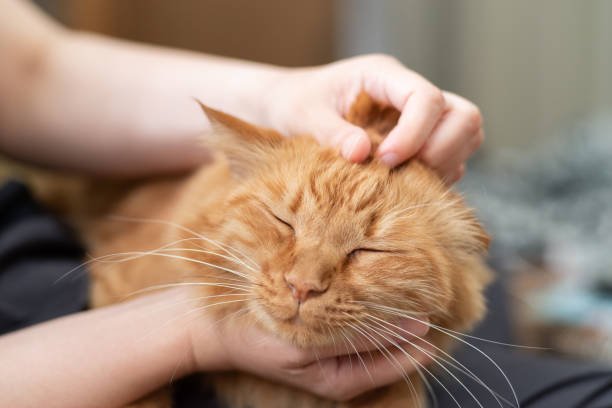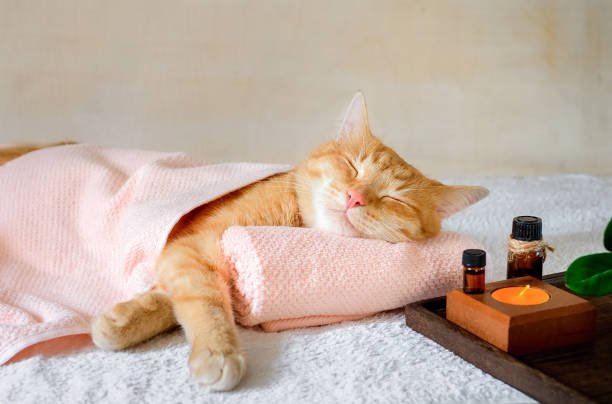Cats are often stereotyped as aloof, low-maintenance pets that don’t need much stimulation. While it’s true that cats are more independent than dogs, indoor cats still require mental and physical engagement to stay happy and healthy. In fact, playtime is one of the most essential components of a cat’s life, especially for those who spend their days indoors. Play is not just about fun; it serves as an outlet for their natural instincts, supports their physical health, and enhances their overall well-being.
In this article, we’ll explore why playtime is so important for indoor cats, the benefits it provides, and some practical tips to help you engage your feline friend in meaningful play. Whether you’re a seasoned cat parent or a first-time owner, you’ll walk away with valuable insights into how to ensure your indoor cat stays mentally and physically stimulated.
Why Indoor Cats Need Playtime

Cats are natural hunters, and even though your indoor cat doesn’t need to hunt for food, the instincts are still there. In the wild, cats spend a significant part of their day stalking, chasing, and catching prey. Without the opportunity to express these behaviors, indoor cats can become bored, frustrated, and even develop behavioral problems.
Here are some key reasons why play is crucial for indoor cats:
1. Exercise and Physical Health
Indoor cats are at a higher risk of becoming overweight due to limited opportunities for exercise. Lack of physical activity can lead to obesity, which is a common issue among house cats and can cause a host of health problems, including diabetes, joint issues, and heart disease.
Playtime provides much-needed exercise, helping your cat burn calories and stay fit. Chasing toys, jumping after feathers, or running through tunnels are all excellent ways to keep your cat moving and active. Regular exercise can also improve your cat’s agility, coordination, and muscle tone, keeping them healthy as they age.
2. Mental Stimulation
In addition to physical exercise, cats need mental engagement. Without sufficient stimulation, cats can become bored, which may lead to destructive behaviors like scratching furniture, overeating, or excessive grooming.
Interactive toys, puzzle feeders, and games that mimic the hunting process (stalking, chasing, pouncing) are great ways to challenge your cat’s mind. Mentally engaged cats are generally happier and more content, reducing the likelihood of behavioral issues.
3. Prevention of Boredom and Behavioral Problems
Boredom is one of the leading causes of behavioral problems in indoor cats. A bored cat may become aggressive, over-groom, or engage in other destructive behaviors. Without an outlet for their energy, cats may direct their frustration toward furniture, curtains, or even you!
Engaging in regular playtime helps prevent these issues by giving your cat a productive way to release pent-up energy. Play also creates a positive routine, giving your cat something to look forward to each day. A tired, stimulated cat is a happy cat that is less likely to engage in misbehavior.
4. Strengthening the Bond Between Cat and Owner

Playtime is not only beneficial for your cat’s physical and mental health, but it also strengthens the bond between you and your feline friend. Cats may not always show affection in the same way dogs do, but they form deep connections with their humans through interaction and attention.
When you take time to play with your cat, you’re reinforcing your relationship. Your cat will learn to associate you with fun, positive experiences, which can make them more affectionate and engaged with you overall. Plus, there’s nothing quite as rewarding as watching your cat’s natural hunting instincts come to life during play!
5. Stress Relief
Even indoor cats can experience stress. Changes in their environment, such as moving, new pets, or loud noises, can cause anxiety in cats. Playtime offers an excellent way for them to relieve stress by allowing them to act out their natural behaviors in a safe, controlled manner.
Playing helps cats release nervous energy and can reduce signs of stress like hiding, aggression, or compulsive grooming. Regular play can make your cat feel more secure and confident in their home environment.
How to Encourage Play in Your Indoor Cat
Not all cats are the same when it comes to play preferences. Some cats enjoy active, vigorous play, while others prefer a more slow-paced, methodical approach. It’s important to experiment with different toys and games to find what excites your cat. Here are some tips to encourage healthy, stimulating play for your indoor cat.
1. Rotate Toys Regularly
Cats can get bored of the same toys if they see them every day. To keep things interesting, try rotating toys. Put some toys away for a week or two, and then reintroduce them later. Your cat will think they’re brand new!
2. Interactive Toys
Toys that mimic prey are typically the most engaging for cats. Think of toys that move erratically, like a laser pointer, wand toy, or a toy mouse. These stimulate your cat’s hunting instincts, encouraging them to chase, stalk, and pounce.
3. Puzzle Feeders
For mental stimulation, try using puzzle feeders that require your cat to work for their food. These can turn mealtime into a fun, enriching activity. There are many types of puzzle feeders available, ranging from simple to complex, depending on your cat’s skill level.
4. Scheduled Playtime
Consistency is key when it comes to keeping your cat mentally and physically engaged. Try setting aside 10-15 minutes of playtime at the same time each day. Cats are creatures of habit, and they’ll come to expect this dedicated time for fun and exercise.
5. Environment Enrichment
Creating a stimulating indoor environment can also help encourage play. Install cat trees, scratching posts, or shelves for climbing. You can even create a “cat playground” by placing tunnels, boxes, or paper bags around the house. Cats love to explore and hide, so offering them various hiding spots can spark their curiosity and energy.
Signs Your Cat Needs More Playtime
It’s not always obvious when a cat is feeling under-stimulated, but there are several signs to watch out for that might indicate your indoor cat needs more play:
- Restlessness: If your cat is pacing, meowing excessively, or acting hyperactive, they might have too much pent-up energy.
- Weight Gain: If your cat is gaining weight or losing their athleticism, they may not be getting enough exercise.
- Destructive Behavior: Cats who scratch furniture, knock things over, or are aggressive may be doing so out of frustration or boredom.
- Over-Grooming: Excessive grooming, especially if it leads to bald spots, can be a sign of stress or boredom.
If you notice any of these behaviors, it’s time to ramp up the playtime and provide more mental and physical stimulation.
Conclusion
Playtime is a crucial component of an indoor cat’s overall well-being. It helps keep your cat physically fit, mentally stimulated, and emotionally satisfied. Without regular play, indoor cats can become bored, stressed, and prone to health and behavioral issues. By dedicating time each day to engage with your cat through interactive play, you can improve their quality of life and strengthen the bond you share.
So, next time you see your cat lounging on the couch or gazing out the window, remember that they need more than just food and a comfy spot to nap—they need play! Keep your cat entertained, healthy and happy by incorporating regular, stimulating playtime into their daily routine. Your cat will thank you with a lifetime of affection and companionship.




